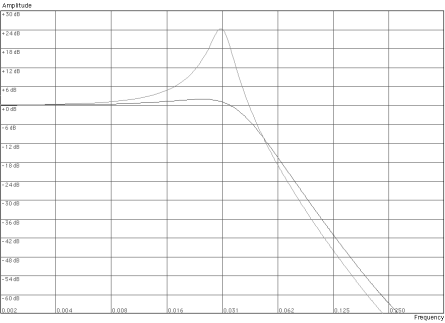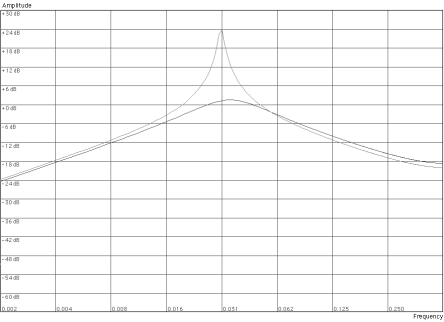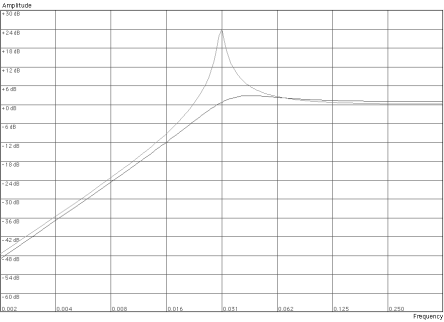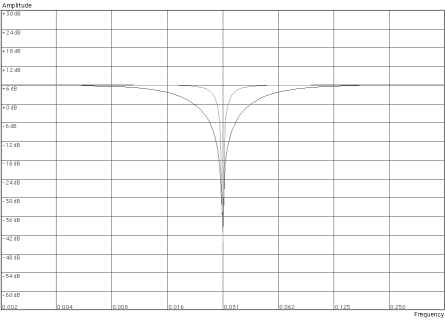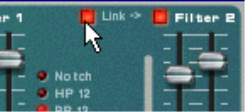|
•
|
A notch filter (or band reject filter) could be described as the opposite of a bandpass filter. It cuts off frequencies in a narrow midrange band, letting the frequencies below and above through. On its own, a notch filter doesn’t really alter the timbre in any dramatic way, simply because most frequencies are let through. However, by combining a notch filter with a lowpass filter (using Filter 2 - see “Filter 2”), more musically useful filter characteristics can be created. Such a filter combination can produce soft timbres that still sound “clear”. The effect is especially noticeable with low resonance (see “Resonance”) settings.
|
|
Note that the Filter Frequency parameter is usually controlled by the Filter Envelope (see “Filter Envelope”) as well. Changing the Filter Frequency with the Freq slider may therefore not produce the expected result.
|

